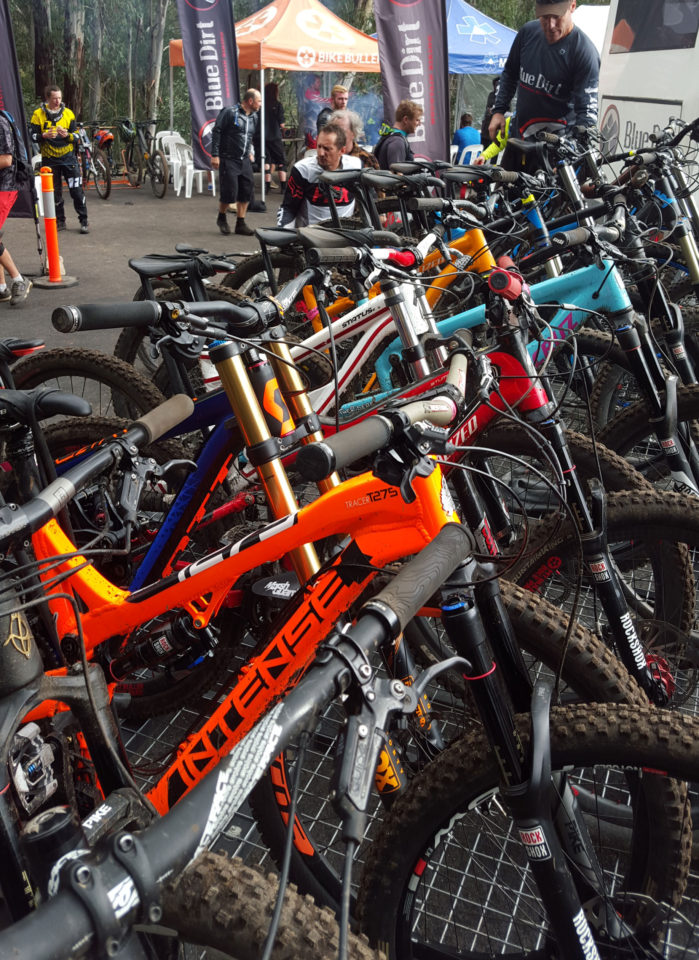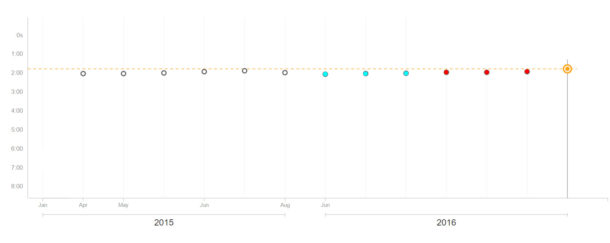I’ve been riding the Mojo3 27.5 Plus since early February. During that time I’ve also been riding my Mojo HD3, shod with the Maxxis Minion 2.5 WT and Ikon 2.35. The trails have been a mix of XC, Gravity, DH, shuttling, pump and jump. So… do Plus tires rule or drool?
I’ve been super happy with my HD3 ever since I built it up back in January 2015. I didn’t have a particular interest in a shorter travel trail bike or Plus tires, so it was with one eyebrow raised I stood in front of the new Mojo 3 Plus. It looked like a super cool, fun bike but why?
Four and a half months later, standing at the door about to head out on a ride I’m beginning to understand.
Time and time again throughout the Summer season I’ve chosen the Mojo 3 over the HD3 as my trail weapon of choice, regardless of trail or adventure. Why? Sure the Mojo 3 is a ‘new bike’, but there’s more to it than the undeniable lure of riding the latest and greatest. Back to back, basically Plus is just a crap load more fun on the trail, even in places where you’d expect it to be out of its depth – like shuttling among DH and Enduro bikes at mountain trail centers.
More fun. That’s going to irritate people. What does more fun mean anyway? Does that equate to speed? Don’t Plus tires just make things easier? Can’t someone make these monster truck tires go away… already?

To dig into it a little deeper I headed out to a popular section of local trail I’ve used to help set up my bike over the last few years. It’s also a section of trail I’ve had a hand in building and maintaining. I’ve ridden I don’t know how many hundreds of times over the years, even on a 36″ unicycle, and it turns out I currently hold the KOM on it.
KOM. Big deal right? Haha hardly. Strava culture is a _massive_ wank, but as a DIY timing tool can be useful every now and then when sessioning a section of track, to improve skills and/or bike setup.
Point being, I know that section of trail well and can generate consistent, solid pace on it.

The trail itself is mainly descending, albeit gently. The surface is hardpack, mostly covered with a thin layer of fine-medium grit. It’s generally super dry, super low grip, only briefly changing character after rain. It’s fairly tight, and includes over 20 changes in direction mostly in the form of flat, low grip corners. Laying down a good time is all about staying on the gas and carrying speed through the changes of direction. The segment is nothing extraordinary, but it’s proven to be a handy little litmus test for assessing tire performance, tweaking pressures etc, and translates well to other trails.

So here’s how it went down.
Three runs on the Mojo HD3. Three runs on the Mojo 3. Weather conditions: Still and cool. Trail conditions: Dry and low grip. Effort for each run was ~90% – having a decent crack at a good run but not putting it all on the line.
| Tires (Front/Rear) | Run 1 | Run 2 | Run 3 | |
| Mojo HD3 | 2.5/2.35 17psi/20psi | 2:04 | 2:02 | 2:01 |
| Mojo 3 | 2.8/2.8 16psi/17psi | 1:58 | 1:56 | 1:56 |
You could discount Run 1 on each bike as scouting runs, but the remaining times still tell the story. The difference in tire performance on the low grip trail was equally surprising and obvious.
The extra grip of the larger tires at lower pressures stood out like dogs balls. Trying to carry maximum speed through the flat turns, the Minion 2.5 struggled to find and maintain grip. The 2.8’s on the other hand generated not just more grip, but super predictable grip. From a rider’s point of view, it meant I was able to focus more on flow, and less on maintaining a knife edge of grip.
Differences in tire behaviour in braking zones were also obvious. Where the narrower, higher pressure tires started to skip across the trail surface, the Plus tires remained planted allowing for later, harder, more controlled braking.
So what does more fun mean? Going by the numbers, on low grip trails it means speed, and everyone loves that shit… right?!
On the flipside
Firstly, the larger the tire, the lower the pressure, the narrower the psi set up window. As little as 0.5 psi is the difference on the 2.8’s between a tire you can push hard on in corners vs one that feels ordinary. Optimum pressures can take a while to get sorted. This is no different really than the Minion 2.5 or any other tire running a higher psi, just that their window of OK performance is wider. Go Plus and be prepared to be best buddies with your digital air pressure gauge.
Secondly, the larger the tire, the less agile, the less direct. The 2.5/2.35 have a nimble, direct feel the 2.8’s can’t match. There are trade offs either way of course.
Thirdly, mud. Larger tires aren’t so good in genuinely wet, muddy conditions, tending to float (slide) on the top rather than biting in.
And last but not least, flat tires.
I hate flat tires. They give me the shits, disrupting and eating into riding time.
In the first few weeks riding the Mojo 3 with Plus tires I had more flat tires then I’d had in the 5+ years prior. All rear tire flats. It bugged me, a lot. You don’t want to be heading out on adventures with no confidence in the durability of your tires. You don’t want to be that guy always stopping to fix flats.
For sure part of the ‘problem’ is that the walls of the 2.8’s are much thinner than the 2.5’s – to maintain a competitive weight of around 800gr per tire. But here’s the thing. The more I rode the Mojo 3 Plus the more I adjusted my riding style. Rather than habitually (and arguably lazily) dragging my rear wheel through whatever with little regard for the tire, I started to ride lighter on the rear wheel. Not protecting it by any means, just riding lighter and being more aware of my fore/aft balance i.e. riding better. And guess what? No rear flats on the Plus tires in months! And most notably that includes a rocky 50km backcountry ride known for trashing tires (and bikes generally), as well as shuttling DH trails littered with sharp rocks.
Do I feel equally confident in Plus tire durability as I do in say the Minion 2.5 etc? Not by a long shot – it has yet to earn that back after the initial run of flats, but it’s getting there. I do think Plus tire manufacturers need to step up their game, but how you ride can make a massive difference to limiting flats on the trail with Plus tires. Just like with any other tire really, but once again… it’s a narrower window kinda deal.
So back to that segment…
So what’s the deal with the little orange/yellow circle at the far right of the Segment times image?
While I was happy with the Mojo 3/HD3 times overall based on conditions the other day – the trails were typically slippery – they were a way short of my fastest time (and equal KOM) of 1:53 set on the HD3 running the Minion 2.5 WT/Ikon 2.35 combo as above.
I have vivid recollections of the HD3 run. The trail was unusually gripped up and clean just after rain, and hitting the segment mid-ride I really had a crack, clipping trees with my shoulders all the way down, on the gas, the sound of the tires clawing for grip, just hanging on. It was great fun, and just goes to show how beautifully balanced a burly bike like the HD3 is, even in what is best described as an old school XC setting.
As it turned out, recent rains made for similar trail conditions the other day. I was out having a fun ride on the Mojo 3 and wondered if the advantage of 2.8 tires would be lessened now that the trails were gripped up. Could I get close to matching the 1:53? I decided to have a proper crack at it.
The run felt pretty good, well within the grip limit on the day, nowhere near as on the edge as the HD3’s 1:53 (can’t afford to clip shoulders these days!) but still fast. Sitting at the bottom of the run chest heaving and gasping for air, I knew I’d definitely put in a solid effort.
1:47… with room to go faster.
Now that’s something to think about!